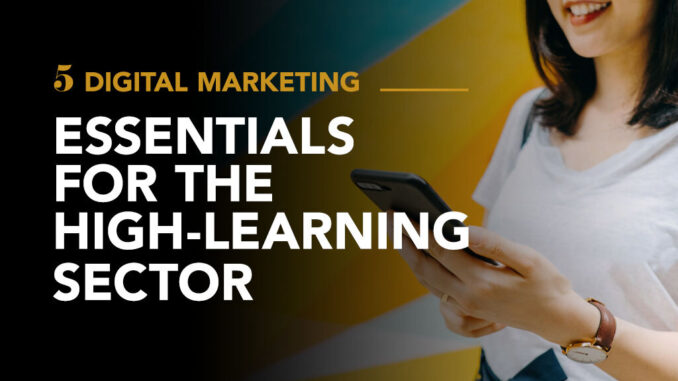
Digitisation is rapidly transforming the way students learn. In the past, learners may have chosen to enrol at higher learning institutions because of the latter’s reputation and location but since the COVID-19 pandemic forced many schools to pause curriculums and close campuses, a bigger priority is now being placed on institutions with the most seamless online learning experience, as well as how fast and effectively distance courses are conducted.
Did you know that in July 2020, a survey tracking the impact of COVID-19 confirmed that nearly 80% of South African households had smartphones which could be used for home learning? The survey, which was conducted by Statistics SA, found that more respondents had laptops than TVs, and even less had radios.
What does this tell you about the way media is being consumed in households? While the stats relate to South African households, the shift in media consumption from traditional to digital, is a global change that is here to stay.
Now more than ever is the time for higher learning marketers to refine marketing strategies that’s not just digital focused but mobile-first. – Black Wolf Agency
Here are 5 ways that thriving higher learning marketers are reaching their student enrolment targets and creating stronger brand credibility:
Mobile-friendly websites
This should not be a surprise when you consider the percentage of households using smartphones for home learning, yet you’ll still find it a struggle to navigate many reputable higher education websites because mobile responsiveness is not considered or prioritised during web development.
Google offers a free mobile-friendly test tool that produces a short report of how easily mobile users can access your website. The tool is also able to detect errors that could impact the visibility of page content. It’s a fast way to see whether your institution is on track but what comes next is the hard part: implementation. At Black Wolf Agency, we’ve always found that clients experience seamless integrations when they not only have a marketing strategy but a production strategy as well. Deciding where to start can be daunting, especially when budgets are tight, and all development can’t be attended to at once. We always recommend ensuring that priority information is available and easily accessible, and that all revenue-generating projects follow.
Education applications
Apps aren’t for everyone, but it certainly does make life easier when all the information you need can be found in one place. Another perk of creating an app for your institution is that it removes external distractions from social and competitor advertising and affords you an opportunity to create in-app ads specifically targeted to students, which can generate added revenue.
Having an app is not just about creating a platform where students can learn, the user experience must be easy to navigate and not require heavy data use since all learners will definitely not have access to WIFI.
According to independent app marketplace, Educational App Store, the number of education apps rose to over 500 000 in 2020, but finding high-quality apps is still a mission.
Segmented email marketing
Creating an email campaign that informs and reminds students of their interest in learning certain courses or enrolling in your institution is an underrated strategy that can greatly benefit business if executed the right way. Campaign Monitor reports that one of the highest email open rates, according to industry benchmarks, are emails related to education. That’s you – this is good news. A close second to emails related to politics, education related emails also have the highest click-through rate, which means that prospective learners are missing out on opening the emails you haven’t sent them.
Video marketing
You may already be cringing at the sight of yet another marketer telling you that video is the way to go but Vimeo reported that in 2017, 60% of educators already believed that video stimulates discussions, over 50% of teachers believed that video improved teacher’s creativity, and 62% of teachers believed that teaching was more effective with video.
Social media advertising
Budget discussions related to marketing must include social media advertising when it comes to higher learning. Why? This is where your target market hangs out. Forget billboards and floor-to-ceiling branded posters – actually, go for it if you must, but if you want to reach your target audience fast and have the ability to measure their interactions, social media advertising must be prioritised.
This list is not exhaustive since there are many more ways to optimise digital marketing for higher learning but each of the tools above are must-have inclusions for an effective marketing strategy.
If you want to implement one of the methods above but don’t know where to start, or if you already have these methods in place but aren’t receiving the intended results, directly – we’d be happy to help.
The post 5 Digital marketing essentials for the higher-learning sector appeared first on Black Wolf Agency.

Leave a Reply